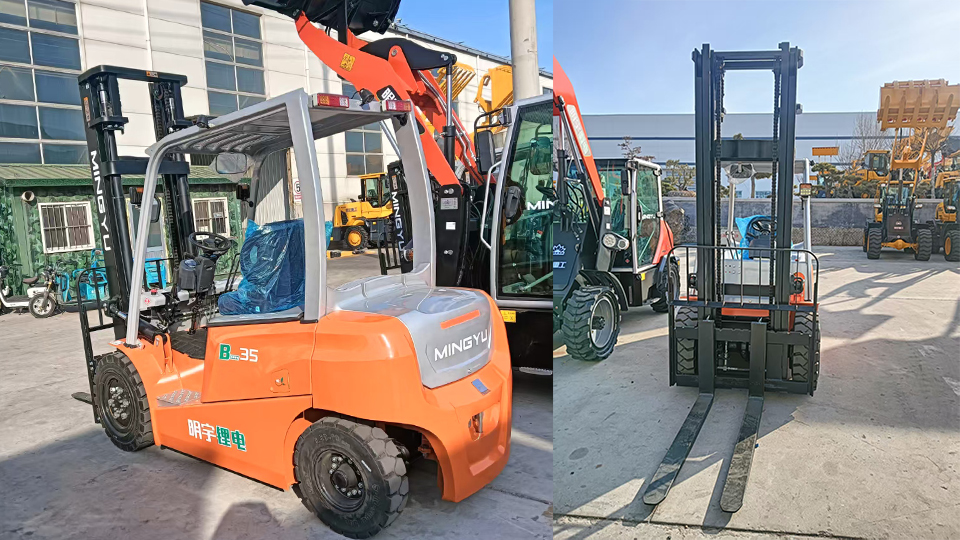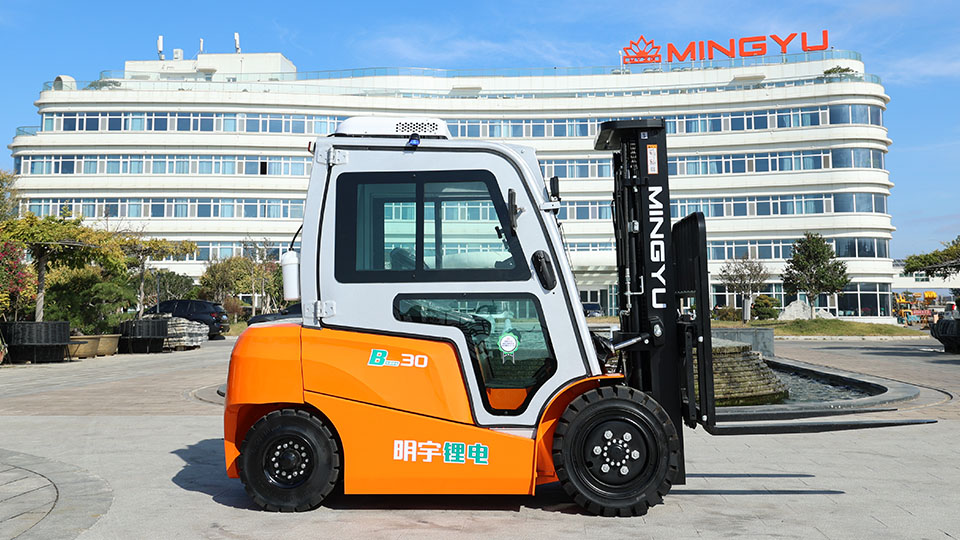
Introduction
Navigating the world of industrial machinery can be complex, with rules and regulations often varying by country, state, and even individual company policy. One of the most common questions in this field is, "Do you need a driving license to drive a forklift?" The short answer is no, a standard driver's license is not sufficient, nor is it a requirement in many places. However, this seemingly simple question opens a discussion about a critical aspect of workplace safety and regulatory compliance. Operating a forklift, or a "powered industrial truck" (PIT) as it's often referred to in official documents, requires specialized training, certification, and licensing. This article will delve into the nuances of forklift operation, the legal requirements, the training process, and the importance of a skilled workforce in maintaining a safe and productive work environment. We'll explore the differences between a standard vehicle and a forklift, the specific safety hazards associated with these machines, and the comprehensive training programs designed to mitigate these risks.
The Fundamental Difference: A Forklift isn't a Car
To understand why a standard driving license isn't enough, we must first recognize the fundamental differences between a car and a forklift. A car is designed for personal transportation on public roads, and a driver's license certifies an individual's ability to safely operate that vehicle in that specific context. This includes understanding traffic laws, reacting to other drivers, and navigating various road conditions.
A forklift, on the other hand, is a piece of heavy industrial equipment designed for a very different purpose: lifting, moving, and stacking materials within a controlled environment, such as a warehouse, factory, or construction site. The operational dynamics are vastly different:

Steering: Most forklifts steer from the rear wheels, which can be counterintuitive for drivers accustomed to front-wheel steering. This allows for a tighter turning radius but can also lead to instability if not handled correctly.
Weight Distribution: A forklift's balance is precariously maintained by a counterbalance system, typically a heavy weight in the rear of the machine. The stability of the vehicle is directly tied to the load it's carrying. An improperly loaded or unbalanced forklift can easily tip over, a phenomenon known as a "tip-over."
Visibility: The mast, load, and overhead guard can obstruct the operator's view, requiring them to constantly adjust their position and use mirrors or other aids to see clearly.
Operating Environment: Forklifts operate in spaces with other vehicles, pedestrians, and obstacles. The hazards are unique and require a different set of skills and awareness than driving on a public road.
A standard driver's license does not and cannot certify an individual's ability to safely manage these unique challenges. The skills and knowledge required for forklift operation are highly specific and focus on material handling, load stability, and navigating a busy industrial environment.
The Legal Framework: OSHA and Beyond
In the United States, the Occupational Safety and Health Administration (OSHA) sets the standards for forklift training and certification. OSHA's standard 29 CFR 1910.178, titled "Powered Industrial Trucks," is the definitive guide for employers and operators. The key takeaway from this regulation is that employers are responsible for ensuring that every forklift operator is trained and certified before they are allowed to operate the machine. This training must be based on the specific type of equipment being used and the hazards of the workplace.
The OSHA standard explicitly states that a driving license is not a substitute for this specialized training. The regulations outline several key components of a compliant training program:
Formal Instruction: This can include lectures, videos, and written materials that cover the fundamental principles of forklift operation, safety regulations, and the specific characteristics of the machine.
Practical Training: Hands-on experience under the direct supervision of a qualified trainer is crucial. This is where operators learn to perform maneuvers, handle different types of loads, and navigate the specific layout of their workplace.
Evaluation: The operator's skills must be evaluated to ensure they can safely operate the forklift. This includes a performance-based assessment of their practical skills.
OSHA mandates that this training be renewed at least every three years, or more frequently if an operator is involved in an accident, is observed operating the forklift unsafely, or is assigned to a new type of equipment. This recurring training is a critical component of maintaining a high level of safety and competence among the workforce.
While OSHA sets the federal standard, many states and local jurisdictions may have additional requirements. It is the employer's responsibility to be aware of and comply with all applicable regulations. Internationally, similar bodies like the Health and Safety Executive (HSE) in the UK and Safe Work Australia have their own specific regulations and requirements for forklift operation, all of which prioritize specialized training and certification over a standard driving license.
The Training Process: From Novice to Certified Operator
The journey to becoming a certified forklift operator is a structured and comprehensive process. It begins with the employer's commitment to safety and compliance, and it culminates in a skilled operator who can confidently and safely perform their duties.

Step 1: Formal Classroom Instruction
The first phase of training is typically conducted in a classroom setting. The curriculum covers a wide range of topics, including:
Forklift Anatomy: Operators learn the names and functions of all the components of a forklift, from the mast and forks to the overhead guard and counterbalance.
Safety Principles: This is the core of the training. Operators learn about the "stability triangle," a key concept that explains how a forklift's center of gravity works. They also learn about common hazards like tip-overs, falls, and collisions.
Operating Procedures: The course covers pre-operation inspection checklists, proper start-up and shutdown procedures, and safe operating techniques like maintaining a clear view, honking at intersections, and traveling with the forks at a safe height.
Load Handling: A significant portion of the training focuses on how to safely handle different types of loads, including understanding load capacity, stacking techniques, and the importance of securing loads.
Workplace-Specific Hazards: This part of the training is tailored to the specific environment where the operator will be working. It covers unique hazards like sloped ramps, narrow aisles, and different types of surfaces.
Step 2: Practical, Hands-on Training
After the classroom instruction, operators move to the practical portion of the training. This is where they put their newfound knowledge to the test under the guidance of a qualified trainer. The practical training typically includes:
Pre-Operation Inspection: The operator learns to perform the required pre-shift inspection, checking for things like tire pressure, fluid levels, and brake functionality.
Maneuvering: Operators practice basic maneuvers like forward and backward driving, turning in tight spaces, and navigating around obstacles.
Load Handling Practice: This is a crucial part of the training. Operators practice picking up and setting down loads of various weights and sizes, stacking them on shelves or in designated areas, and transporting them safely.
Ramp and Grade Navigation: Operators learn how to safely drive on sloped surfaces, a common hazard in many warehouses and industrial settings.
Step 3: Operator Evaluation
The final step is a formal evaluation of the operator's skills. The trainer observes the operator performing all the required tasks to ensure they are competent and safe. This evaluation confirms that the operator has not only understood the material but can also apply it in a real-world setting. Upon successful completion of both the formal and practical training and evaluation, the operator receives a forklift certification or a license, which is issued by the employer and is valid for a specific period (typically three years in the U.S.).
The Consequences of Uncertified Operation
Operating a forklift without proper certification is not just a breach of regulations; it's a dangerous practice that can have severe consequences. Employers who allow uncertified workers to operate forklifts face significant penalties from regulatory bodies like OSHA, including hefty fines and legal action. More importantly, the risk of accidents, injuries, and fatalities increases dramatically.
Forklift accidents are a major source of workplace injuries and deaths. Common accidents include:
Tip-overs: This is the most common cause of forklift fatalities. It occurs when a forklift's center of gravity shifts too far forward or to the side, causing it to overturn. This can be caused by improper loading, turning too fast, or operating on a sloped surface incorrectly.
Pedestrian Collisions: Forklifts are heavy and often operate in areas with limited visibility, making pedestrians vulnerable. A collision with a forklift can cause serious injury or death.
Falls from Forks: This occurs when a worker stands on the forks to be lifted to a high location. This is an extremely dangerous and prohibited practice, as the individual can easily fall or be crushed.
Dropped Loads: An improperly secured or overloaded forklift can drop its load, injuring anyone in the vicinity or damaging property.
Proper training and certification are the most effective ways to mitigate these risks. A certified operator understands the potential hazards, knows how to perform a safety inspection, and has the skills to operate the machine in a safe and controlled manner.
Conclusion: The Value of a Skilled and Certified Workforce
In summary, the answer to "Do you need a driving license to drive a forklift?" is a resounding no, but not for the reason one might think. While a standard driver's license is irrelevant to forklift operation, a specialized, employer-issued certification is an absolute legal and safety requirement. This certification is earned through a structured training program that covers classroom instruction, hands-on practice, and a final evaluation.
The regulations set by bodies like OSHA are not arbitrary; they are the result of decades of experience and research into the unique hazards associated with powered industrial trucks. An investment in proper training is an investment in the safety and well-being of a company's workforce and the efficiency of its operations. A well-trained and certified forklift operator is a valuable asset, capable of performing their duties safely, efficiently, and in compliance with all legal requirements. The distinction between a car and a forklift is more than just the machine; it's the environment, the purpose, and the specialized skill set required to operate it safely.
Name: selena
Mobile:+86-13176910558
Tel:+86-0535-2090977
Whatsapp:8613181602336
Email:vip@mingyuforklift.com
Add:Xiaqiu Town, Laizhou, Yantai City, Shandong Province, China